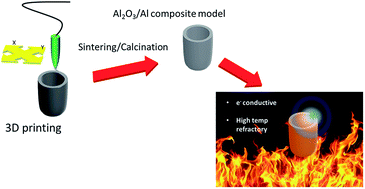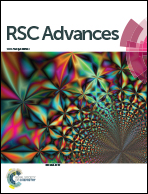Fabrication of a ceramic/metal (Al2O3/Al) composite by 3D printing as an advanced refractory with enhanced electrical conductivity
Abstract
Fused deposition modelling (3D) printing is used extensively in modern fabrication processes. Although the technique was designed for polymer printing, it can now be applied in advanced ceramic research. An alumina/aluminum (Al2O3/Al) composite refractory can be fabricated by mixing metallic aluminum in a polymer to form an Al/polymer composite filament. The filament can be printed via a regular thermoplastic material extrusion printer with no machine modification. In this study, Al/polymer composite samples were printed in a crucible shape and sintered at different temperatures to form Al2O3/Al composite refractory specimens. The sintered samples were examined via several analytical techniques such as scanning electron microscopy, energy dispersive X-ray spectroscopy, X-ray diffraction, compressive testing, hardness testing, XPS, and Hall measurement. Unlike other ceramic printing techniques that require expensive 3D printing machines and a very high temperature furnace (above 1500 °C) for post processing, this study demonstrates the viability of fabricating refractory items using a cost-effective fused deposition modelling 3D printer and a low temperature furnace (900 °C). The samples did not disintegrate at 1400 °C and were still sufficiently electrically conductive for advanced refractory applications.



 Please wait while we load your content...
Please wait while we load your content...